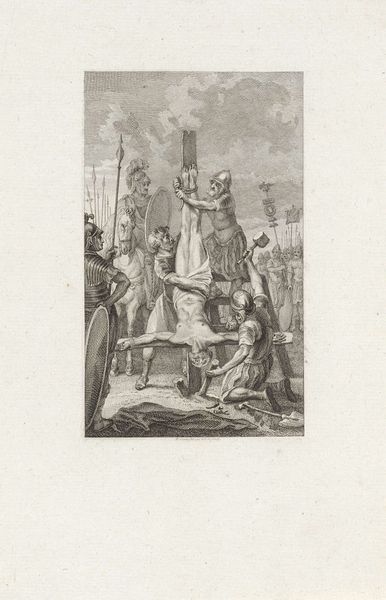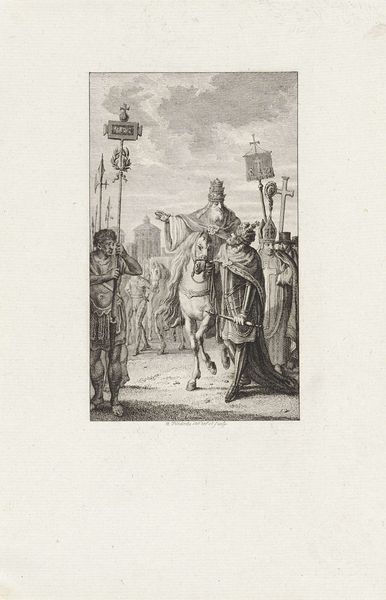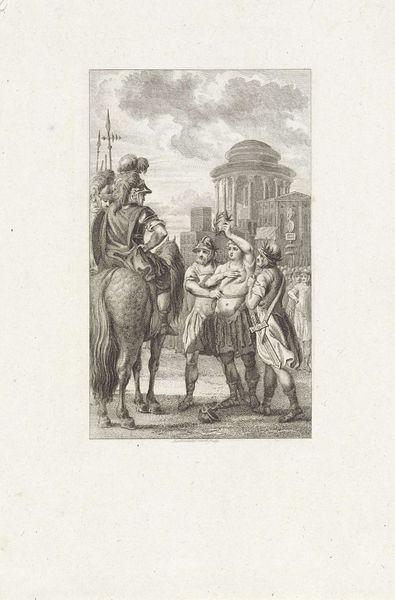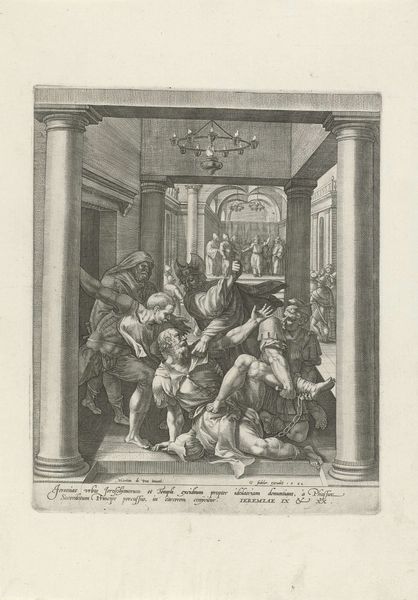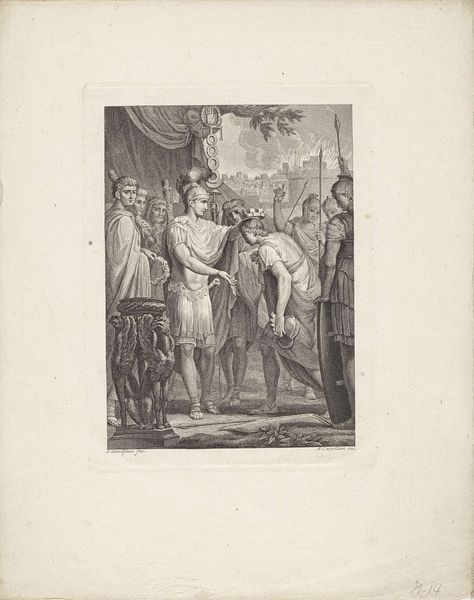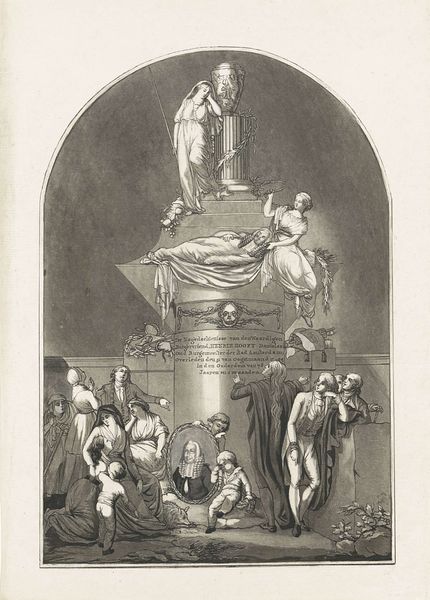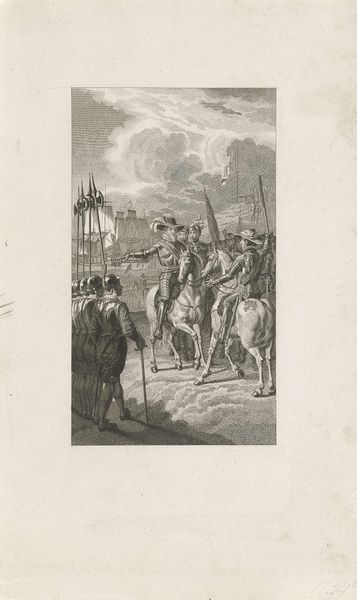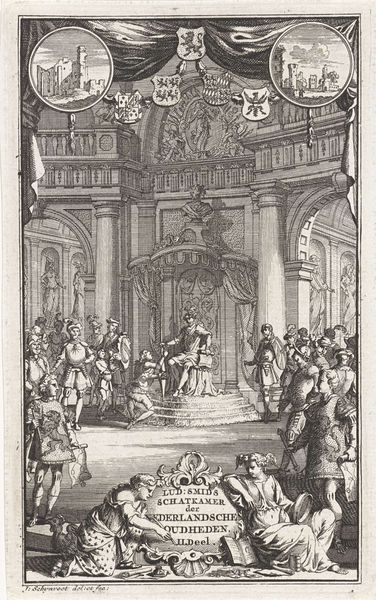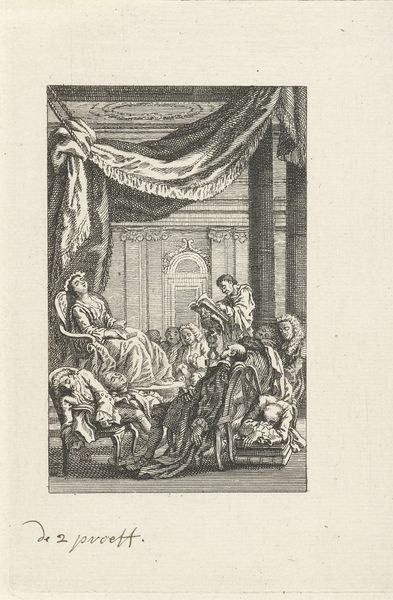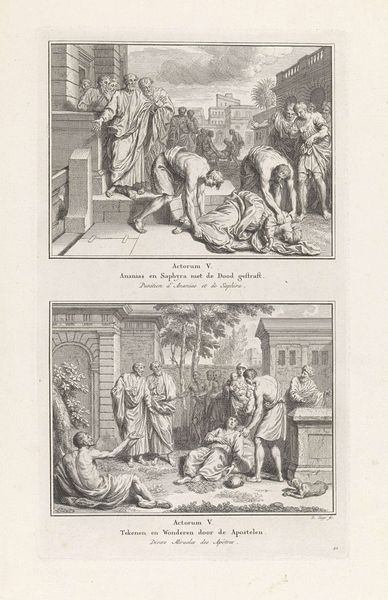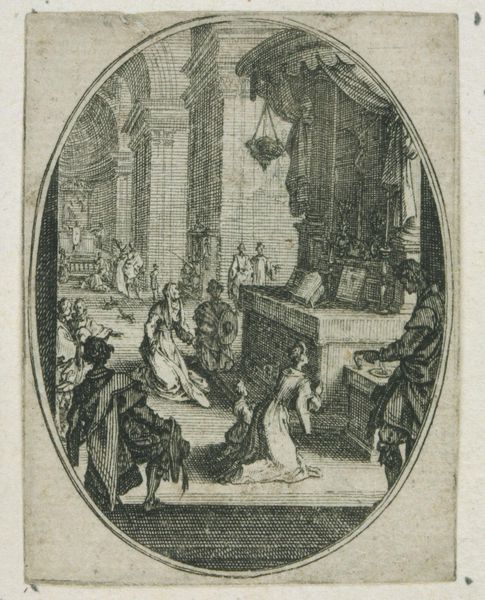
print, engraving
#
neoclacissism
# print
#
old engraving style
#
figuration
#
pencil drawing
#
classicism
#
line
#
history-painting
#
engraving
Dimensions: height 210 mm, width 140 mm
Copyright: Rijks Museum: Open Domain
Curator: Welcome. Here we have “Alliantie met Frankrijk, 1792,” or "Alliance with France, 1792," a print currently held here at the Rijksmuseum. Editor: My first impression is how neat and organized the lines are. The classical elements lend the piece an air of somber diplomacy, but there is warmth conveyed in the figures in the center embracing. Curator: Exactly. It depicts the union between the Netherlands and France against their common enemy, Great Britain, during the Batavian Revolution. Its classicism served a very clear propaganda function. The central figures mimic gestures that reach back to antiquity to convey legitimacy. Editor: You can certainly feel the intention behind it. It’s a fascinating look at how the politics of imagery played out then. Tell me more about that function. Curator: Certainly. Note the figures around the pillar with raised arms. They acknowledge and support the bond. The pillar itself symbolizes permanence and authority, inscribed with the promises of alliance. The almost theatrical arrangement invites the public to witness and validate the historical agreement. Editor: It's also interesting to think about who this "public" really was. Surely not everyone shared in this enthusiasm, or perhaps understood the promises equally. Who was left out of this carefully constructed visual narrative? Curator: Indeed, there’s always a tension between intended message and audience reception. The style of classicism itself may have excluded those unfamiliar with its conventions. And, the print was made for distribution within a certain political class. It would also be used to promote a unified cause across various communities and factions, especially among supporters of the Batavian Revolution. Editor: It strikes me how such an apparently formal piece can reveal such intense power struggles and political maneuvering that impacted real people’s lives. Curator: Precisely! That's what makes analyzing art like this so relevant to understanding history, beyond just aesthetic appeal. Editor: It's a stark reminder that images, even those that seem distant or purely historical, carry encoded intentions. Curator: I’ll certainly think more critically about how alliances are visually constructed in contemporary settings, next time.
Comments
No comments
Be the first to comment and join the conversation on the ultimate creative platform.
